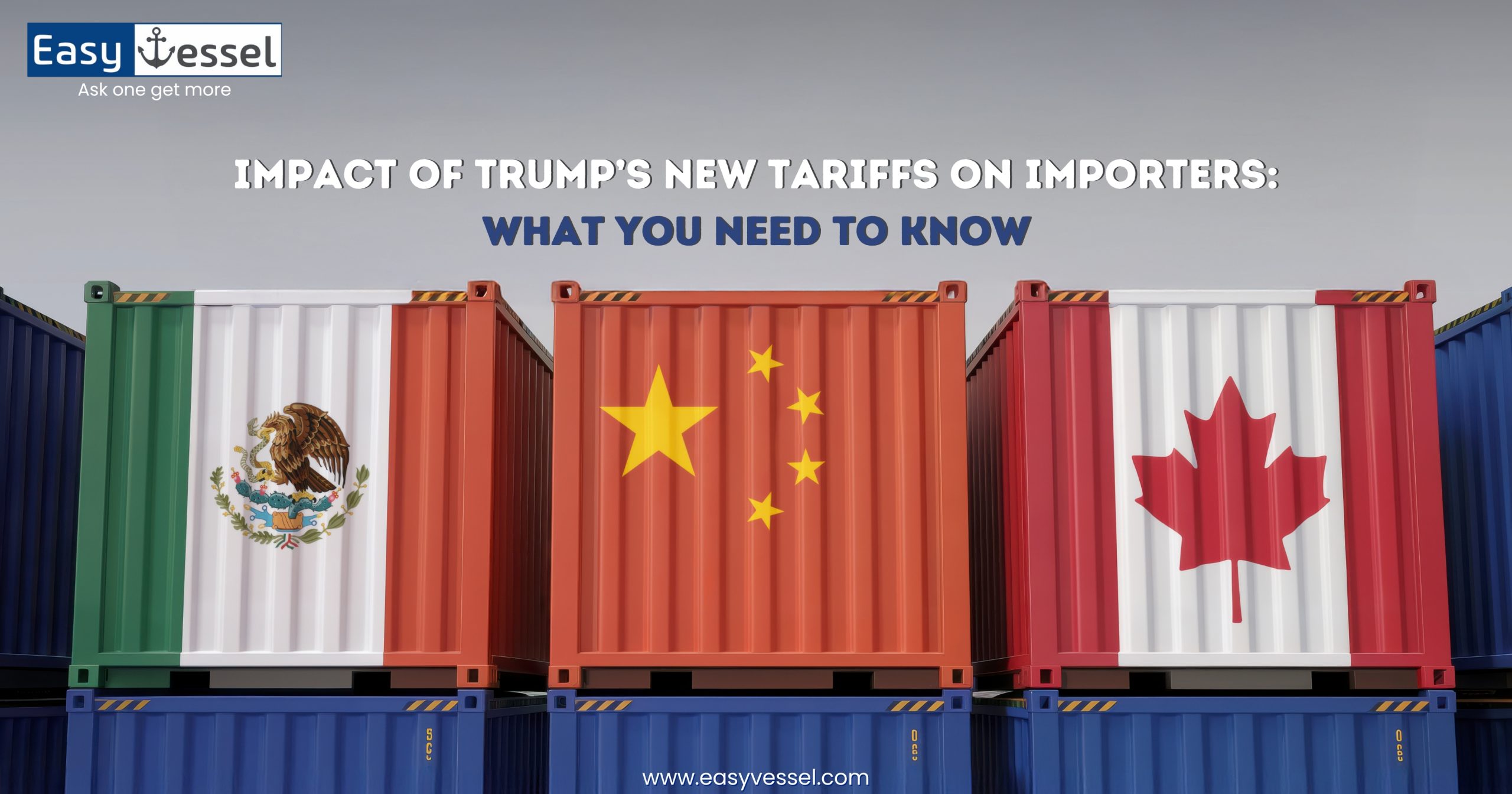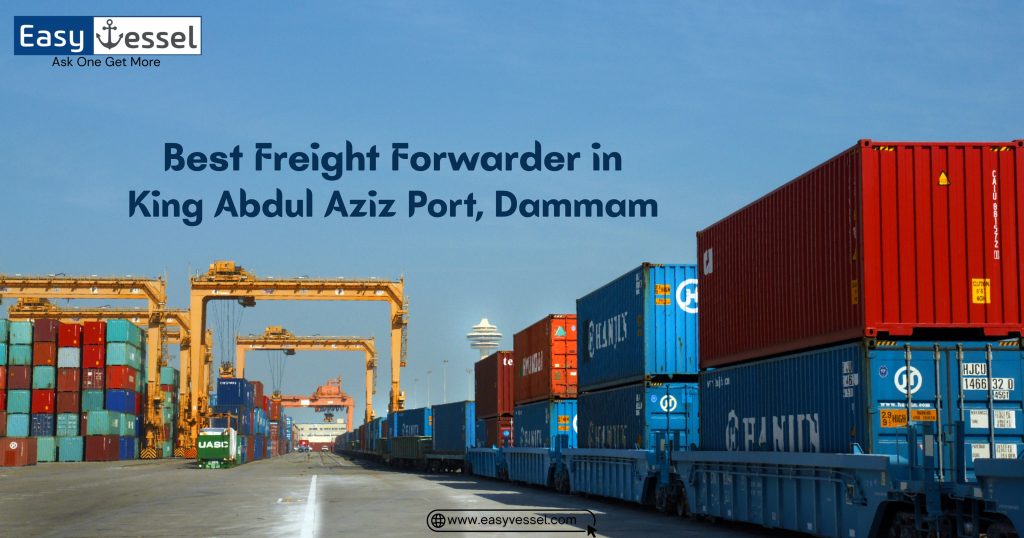The recent implementation of new tariffs under President Donald Trump’s administration has significantly altered the global trade landscape. These measures, aimed at protecting domestic industries and addressing trade imbalances, have far-reaching implications for importers. Businesses involved in international trade must comprehend these changes.
Overview
In February 2025, President Trump announced a series of tariffs targeting imports from key trading partners, including Canada, Mexico, and China. A 25% tariff was imposed on all steel and aluminum imports, effective March 12, 2025, eliminating previous exemptions. A 10% tariff was also levied on all Chinese imports starting February 4, 2025. These measures aim to protect U.S. industries and address concerns over national security and unfair trade practices.
Canada and Mexico Tariffs
The recent 25% tariffs on steel and aluminum imports have strained trade relations between the U.S., Canada, and Mexico despite the USMCA agreement. These tariffs have significantly impacted industries reliant on these materials, increasing manufacturers’ production costs and raising consumer prices. Businesses importing from Canada and Mexico now face higher operational expenses, forcing them to rethink their supply chains.
In response, Canada and Mexico have imposed retaliatory tariffs on U.S. exports, affecting agriculture, automotive, and manufacturing industries. These escalating trade tensions create uncertainty for businesses operating in North America, making it crucial for companies to explore alternative suppliers, negotiate better trade terms, or shift towards domestic production to adapt to the changing trade environment.
China Tariffs
The U.S.-China trade war has led to multiple tariffs, significantly affecting importers and exporters. The U.S. has imposed high tariffs on Chinese goods, covering sectors like electronics, machinery, textiles, and consumer goods. These tariffs have increased costs for American businesses that rely on Chinese manufacturing and raw materials, forcing many companies to either absorb the costs or pass them on to consumers. As a result, prices for everyday goods have risen, impacting both small businesses and large corporations.
China has responded by imposing retaliatory tariffs on the United States exports, particularly targeting agriculture, automotive, and technology sectors. This has hurt American farmers and manufacturers, reducing demand for U.S. goods in China’s vast market.
Tariffs on Steel and Aluminum
The U.S. government’s recent 25% tariff on steel and 10% tariff on aluminum imports have significantly impacted industries reliant on these raw materials. These tariffs aim to protect domestic metal producers but have increased costs for businesses that depend on imported steel and aluminum, such as the automotive, construction, and manufacturing sectors. Higher material costs have led to price hikes on finished products, affecting both businesses and consumers. Many small and medium-sized enterprises (SMBs), which lack the purchasing power of larger corporations, face financial strain due to these rising expenses.
In response, key trade partners like Canada, Mexico, and the European Union have implemented retaliatory tariffs, further escalating trade tensions. This has disrupted supply chains and forced businesses to seek alternative suppliers or absorb losses. Some companies are exploring domestic production, but higher labor and operational costs in the U.S. make this a challenging adjustment.
Additional Tariffs
The Trump administration has hinted at additional product tariffs, including electronics, consumer goods, and agricultural imports. These potential tariffs could further disrupt trade flows and create challenges for businesses reliant on international markets. Importers must stay informed about upcoming trade policy changes to adapt their strategies accordingly.
Immediate Impact on Importers
- Increased Costs: Importers of affected goods now face higher expenses due to the tariffs. For example, businesses relying on steel and aluminum imports must contend with a 25% cost increase, impacting profit margins and potentially leading to higher consumer prices.
- Supply Chain Disruptions: The sudden implementation of tariffs has disrupted established supply chains. Companies may need to seek alternative suppliers or adjust sourcing strategies, leading to delays and increased operational complexities.
- Contractual Challenges: Existing contracts may not account for sudden tariff-induced cost increases, leading to potential disputes between importers and suppliers over who bears the additional expenses.
Recent Tariffs’ Impact on SMBs
Small and medium-sized businesses (SMBs) are particularly vulnerable to the new tariffs. Unlike large corporations, SMBs have limited financial resources and may struggle to absorb increased costs. Many SMBs rely on imported goods for their operations, and the tariffs could force them to either raise prices or reduce profit margins. Supply chain disruptions could also lead to inventory shortages, further affecting business operations.
Strategies for SMBs to Adjust to the New Trade Environment
1. Diversify Supply Chains
One of the most effective ways to mitigate tariff impacts is by diversifying suppliers and manufacturing locations. SMBs should explore alternative sourcing options in countries not subject to high tariffs. For instance, companies can look for suppliers in Vietnam, India, Mexico, or other tariff-friendly nations if U.S. tariffs on Chinese imports increase.
2. Leverage Free Trade Agreements (FTAs)
SMBs can use free trade agreements (FTAs) to reduce tariff costs. For example, businesses importing from Canada or Mexico can benefit from the United States-Mexico-Canada Agreement (USMCA), which offers tariff exemptions or reductions for eligible products. Understanding and utilizing FTAs can provide significant cost savings.
3. Negotiate Contracts
Suppliers may share the burden of higher tariffs by adjusting pricing or offering better payment terms. SMBs should also work closely with suppliers to find the most cost-effective modes of transportation and reduce freight charges. Consolidating shipments and optimizing logistics can help offset increased costs.
4. Reclassify Products to Reduce Tariff Exposure
Harmonized System (HS) codes determine tariff rates for imported goods. SMBs should review their product classifications with customs brokers and trade experts. Sometimes, slight modifications to a product or its assembly process can lead to classification under a lower tariff category, reducing duty costs.
5. Explore Domestic Manufacturing and Nearshoring
With rising import tariffs, SMBs should consider shifting some manufacturing operations closer to home. Nearshoring (moving production to a nearby country, such as Mexico or Canada) can help businesses reduce dependency on heavily tariffed regions while maintaining supply chain efficiency.
6. Stay Updated on Trade Policies and Tariff Changes
Trade policies are constantly evolving. SMBs should monitor tariff updates through reliable sources such as government trade websites, industry associations, and freight forwarding companies in Canada, the U.S., or other affected regions. Partnering with trade experts can help businesses stay compliant and avoid unexpected costs.
7. Leverage technology and strategic partnerships
Leverage technology and strategic partnerships to navigate the evolving trade landscape. Utilizing digital freight marketplaces can improve pricing transparency, streamline route optimization, and enhance communication with logistics providers. Additionally, staying in close contact with your freight forwarder and customs broker is essential for understanding new tariff regulations, identifying cost-saving opportunities, and finding innovative solutions to minimize the impact of rising trade costs.
Industry-Specific Impacts
- Automotive Industry: The tariffs on steel and aluminum have significantly affected the automotive sector, increasing production costs and potentially leading to higher consumer prices. Companies are exploring strategies such as relocating facilities or investing in new technologies to mitigate these impacts.
- Retail Sector: Retailers importing goods from China face increased costs due to the 10% tariff. Companies like Walmart have been pressured to absorb these costs or negotiate lower prices with suppliers, leading to tensions and potential legal challenges.
Economic and Legal Considerations
- Market Volatility: The introduction of tariffs has contributed to financial market instability, with fluctuations in equity and bond markets as investors react to potential economic slowdowns.
- Legal Disputes: Unclear contractual terms regarding tariff-induced cost increases may lead to legal disputes between importers and suppliers. Companies are advised to review and, if necessary, renegotiate contracts to address these new challenges.
Conclusion
The new tariffs introduced under President Trump’s administration present significant challenges for importers. By understanding the specific impacts and proactively implementing strategies to mitigate these effects, businesses can navigate the evolving trade environment and maintain operational stability.
Reference:
Second Trump tariffs by Wikipedia[1].
Frequently Asked Questions
Trump’s new tariffs include 25% on steel and 10% on aluminum imports, along with increased tariffs on goods from China, Canada, Mexico, and other trading partners. These tariffs impact importers, manufacturers, retailers, and consumers by increasing costs and disrupting supply chains.
Despite the USMCA trade agreement, the U.S. has imposed 25% tariffs on steel and 10% on aluminum from Canada and Mexico. These countries have responded with retaliatory tariffs on U.S. goods, affecting agriculture, automotive, and manufacturing industries.
Some companies may apply for tariff exemptions or waivers, but approval is not guaranteed and can take time. Importers should explore trade agreements, negotiate with suppliers, or adjust their sourcing strategies to mitigate tariff costs.
Businesses can diversify supply chains, negotiate better shipping terms, seek alternative suppliers, or explore domestic production to reduce dependency on high-tariff imports. Working with suppliers and trade experts can also help manage import costs effectively.
The duration of tariffs depends on political and trade negotiations. While some may be lifted or adjusted, businesses must remain flexible and proactive in managing their supply chains.




